Measuring power consumption on Linux
..with PCP and pmda-denki
Christian Horn
@Tokyo Linux User Group, November, 2024
We’ll have Q&A time at the end, but feel free to interrupt me.
Slides also hosted at:
Agenda
- Theory
- What is pmda-denki, why was it written?
- Prior art / related software
- A typical power measurement setup
- Implemented sources for power metrics
- Practical usage
- How much power are wlan/NIC etc. using?
- How much energy consume gpu/memory when playing a video?
- For a given task, which system is most energy efficient?
- The future
- Links
What is pmda-denki?
- A piece of the Performance Co-Pilot (PCP) suite
- Performance Metrics Domain Agent (PMDA): specialist for measurements
in one area:
- pmda-postgresql: PostgreSQL metrics
- pmda-linux: linux memory, network etc.
- pmda-denki: power consumption
- denki (Japanese 電気): “electricity”
Why was pmda-denki written?
- For insights like “Your commit makes the workload 5% faster, but uses up 20% more power” or “In one day, this system uses the power equivalent to XY liter kerosine”
- To get greener:
- Fujitsu, NEC aim to curb powerhungry data centers appetite by 40%
- The world is asking Linux and OpenSource what we contribute.
- Because I was curious about some things, and not proper tool for exploration was around - see ‘practical usage’ section later
History, related software and research
- 2007: powertop, default tool on x86/ARM/RISC-V to see live power metrics, to optimize. No abstraction into library, no historical metrics.
- 2021: pmda-denki, PCP power consumption metrics. Name appeared first at pcp.conf 2019. Via PCP we get historical recording, live monitoring, warnings (PMIE), visualization via redis/Grafana, anomaly detection. RHEL8 and later contain pmda-denki.
- 2022 (?): Kepler, heavy duty, Red Hat/IBM seeded and sponsored. Kepler is reading consumption metrics, taking guesses, attributing consumption to single containers. On OpenShift helping to decide “shift this container to a different node which has solar generated power right now”. Kepler also getting available as source for PCP.
Test setup overview
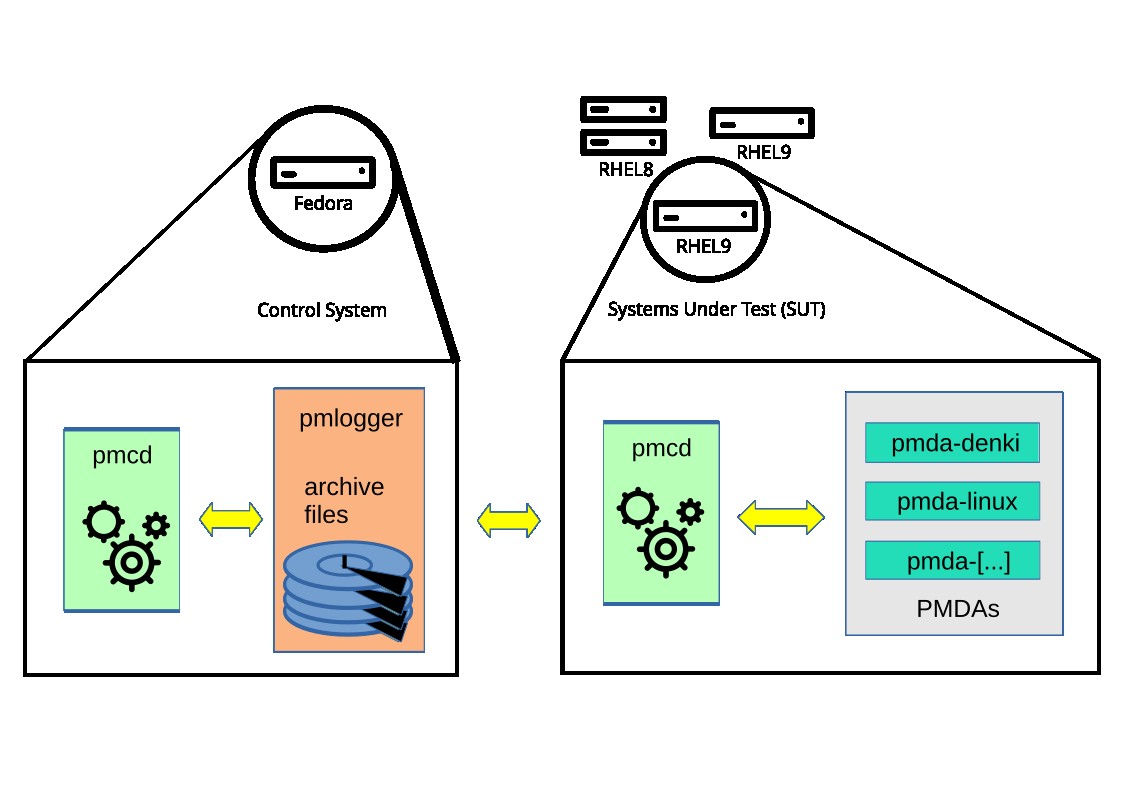
Sources for power consumption metrics
- RAPL readings
- On x86, RAPL offers metrics on how much power is consumed by CPU, RAM and onboard GPU
- Battery readings
- For systems with battery, you can run on battery while running workloads. By observing the battery discharge level, we can calculate the consumption.
- Smart plug readings (via pmda-openmetrics)
- Smart plugs are inserted between power outlet and our ‘system under test’. Smart plugs hook into the network via WLAN or RJ-45 and report the electrical consumption of the connected consumer.
Further sources can be implemented via pmda-denki, or ad hoc via pmda-openmetrics.
The sources in detail
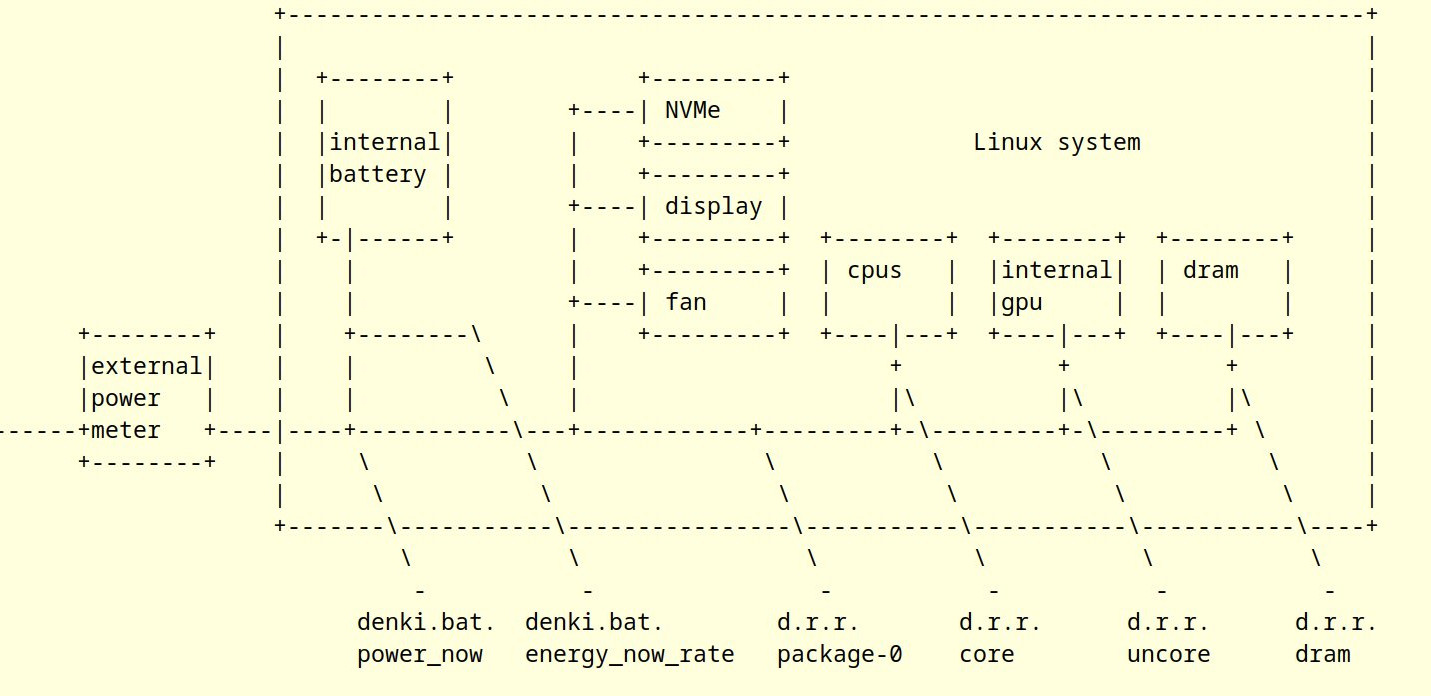
The sources in detail new
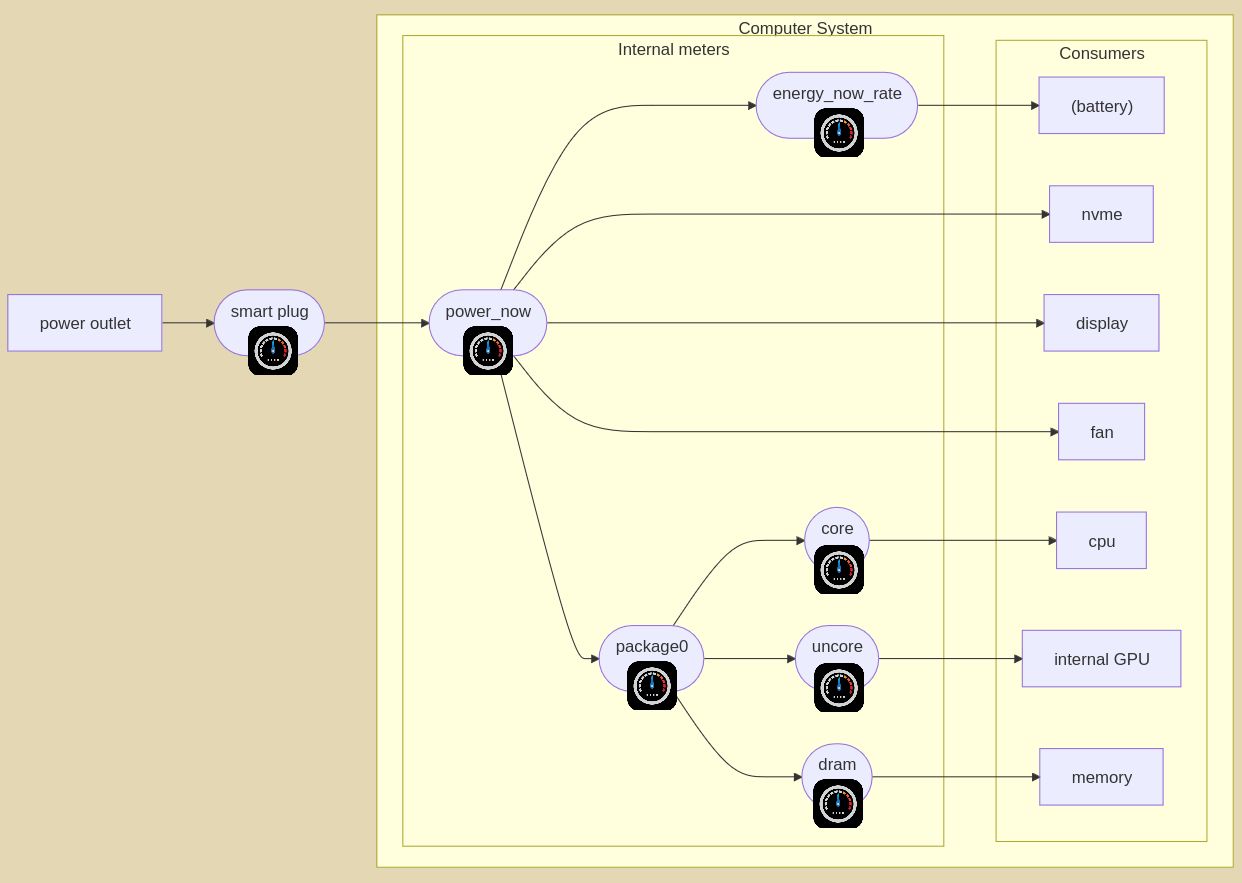
Computing consumption from battery charge level
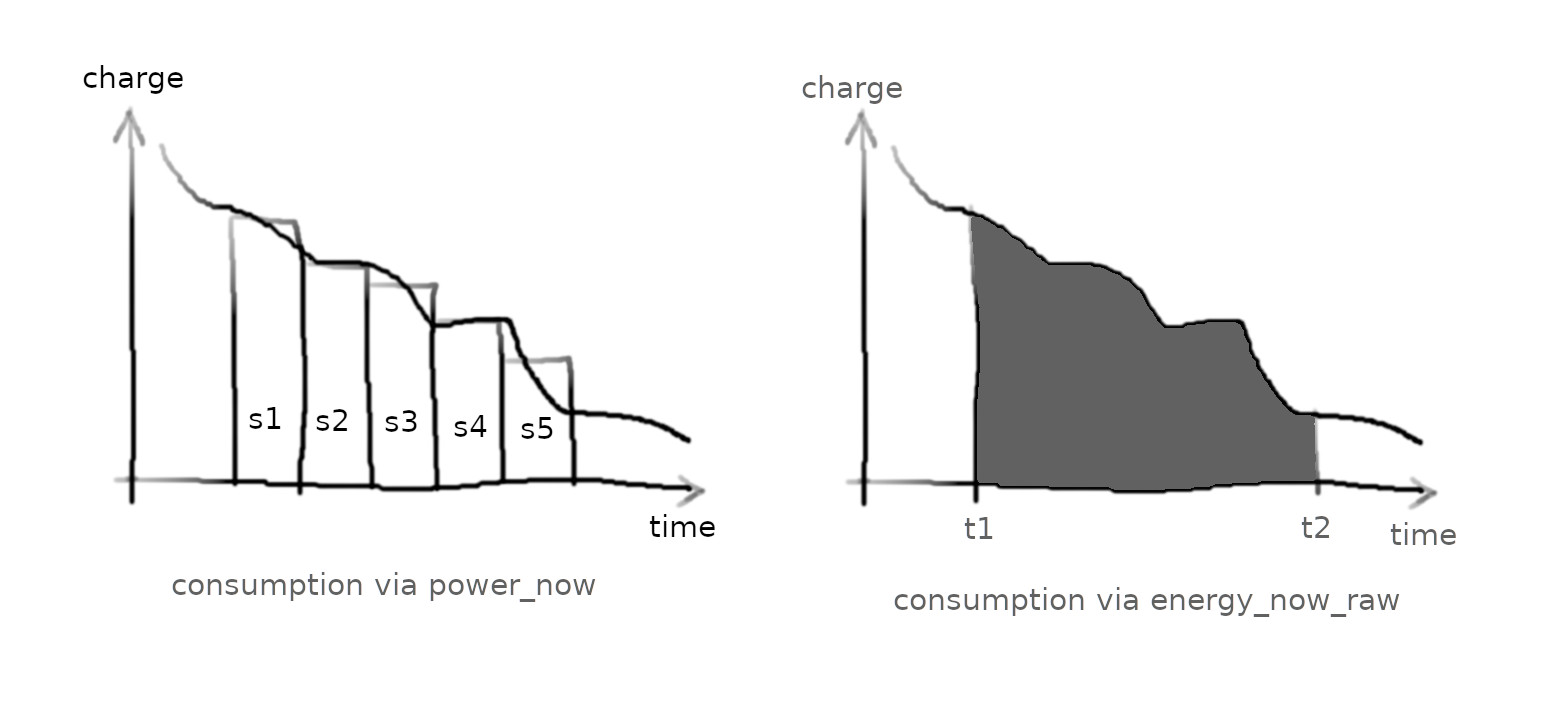
Basic installation
The control system with Fedora 40 or RHEL8/9:
$ sudo dnf -y install pcp-zeroconf pcp-pmda-denki pcp-pmda-openmetrics
$ cd /var/lib/pcp/pmdas/denki/ && sudo ./Install
$ cd /var/lib/pcp/pmdas/openmetrics/ && sudo ./InstallThe SUT runs RHEL 9. pmcd with pmda-denki are offering RAPL metrics:
$ sudo dnf -y install pcp pcp-pmda-denki pcp-system-tools
$ cd /var/lib/pcp/pmdas/denki/ && sudo ./Install
$ sudo echo 'PMCD_LOCAL=0' >>/etc/sysconfig/pmcd
$ sudo systemctl restart pmcd
$ sudo systemctl enable pmcdRun this command to see the power metrics:
$ pmrep -h <IP-of-SUT> denkiReference use cases, 1
What can we learn about consumption of single hardware components?
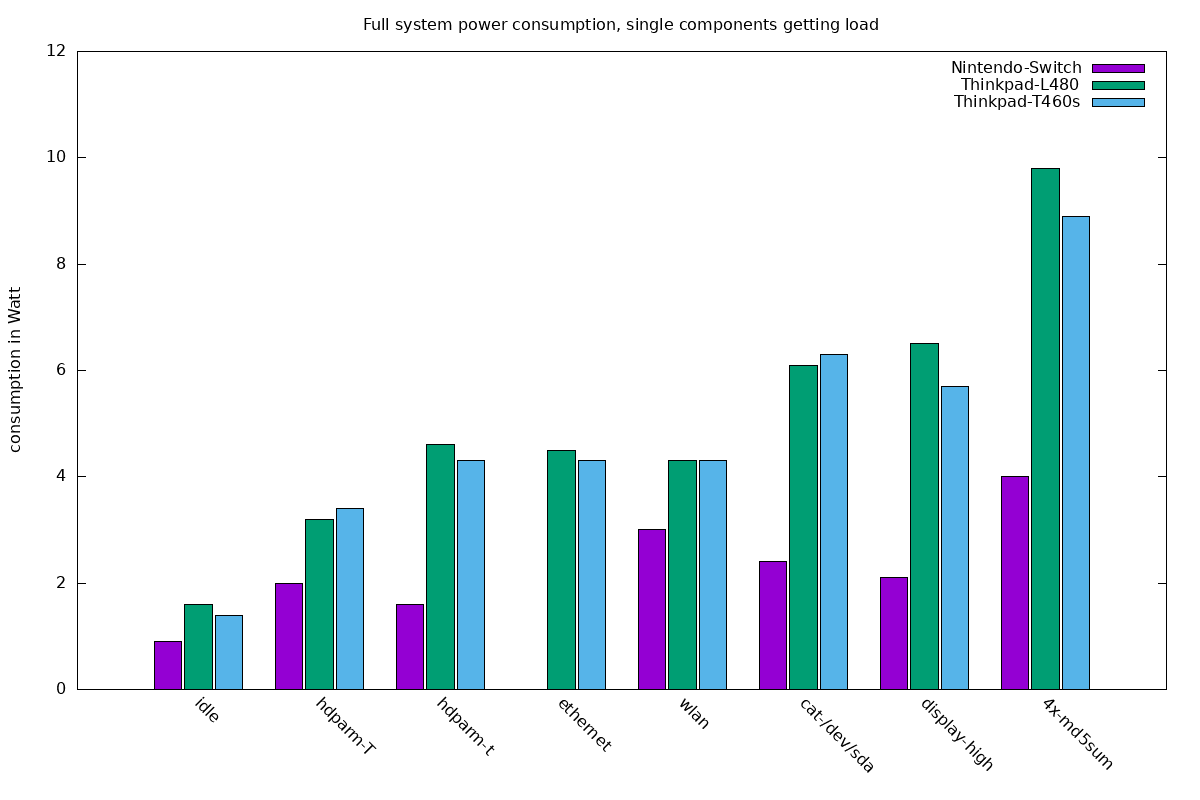
Given task, various software
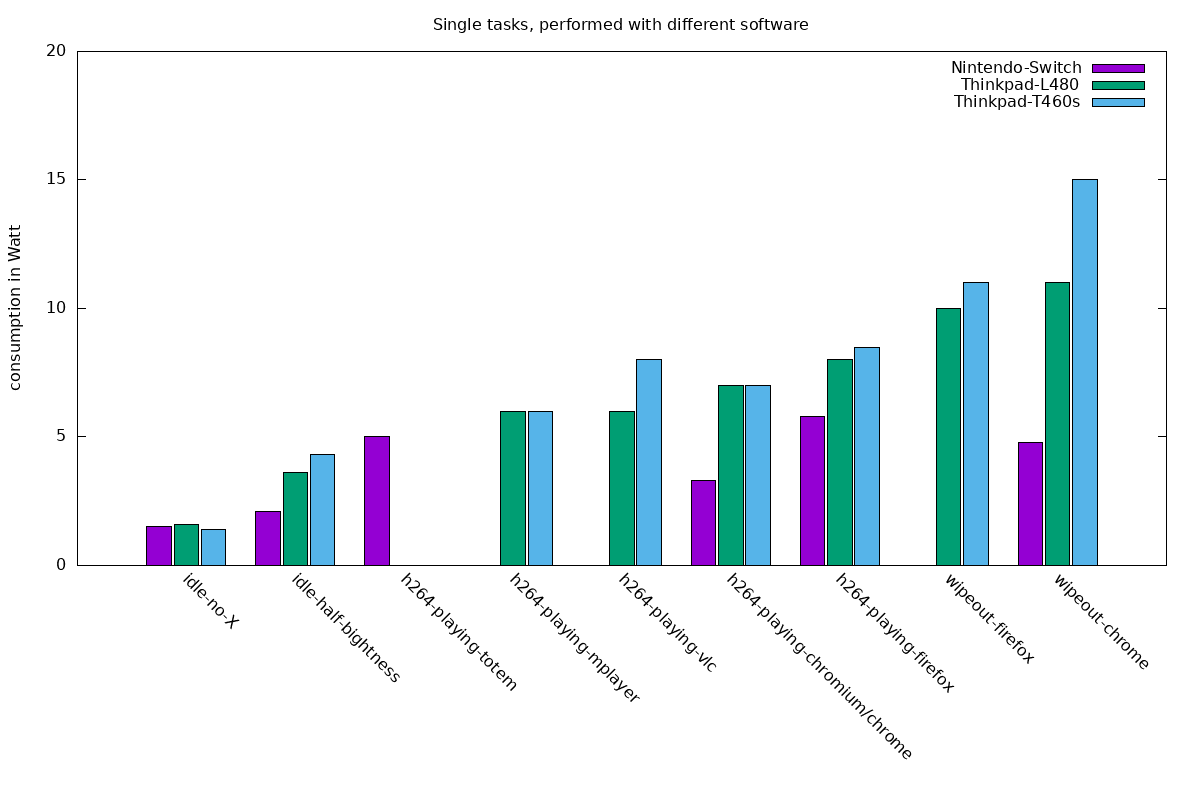
Where do we spend power?
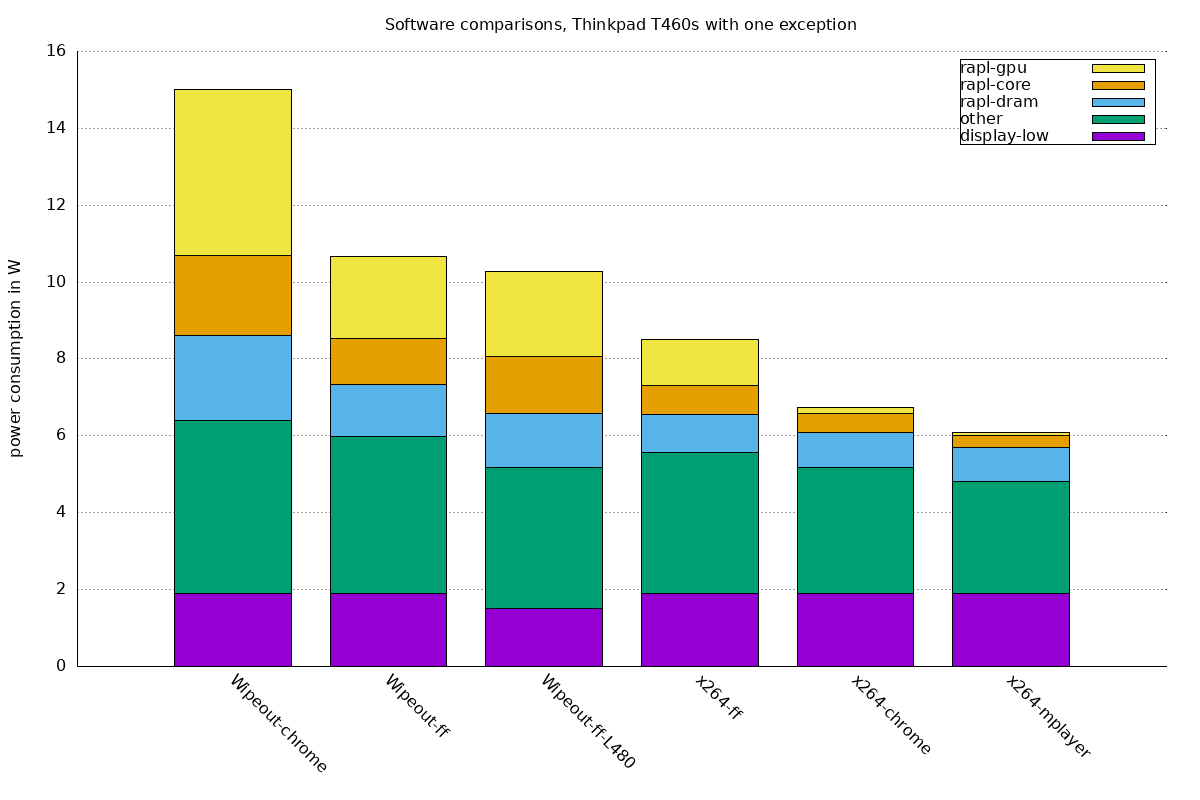
Second test series
Let’s take a single workload, run it on multiple systems, and compare energy efficiency:
- Setup of ‘control system’ and ‘System Under Test’ (SUT)
- Ansible playbooks to prepare SUT: install packages, etc.
- Python code to run the workload(s) and compute power consumption
Job execution
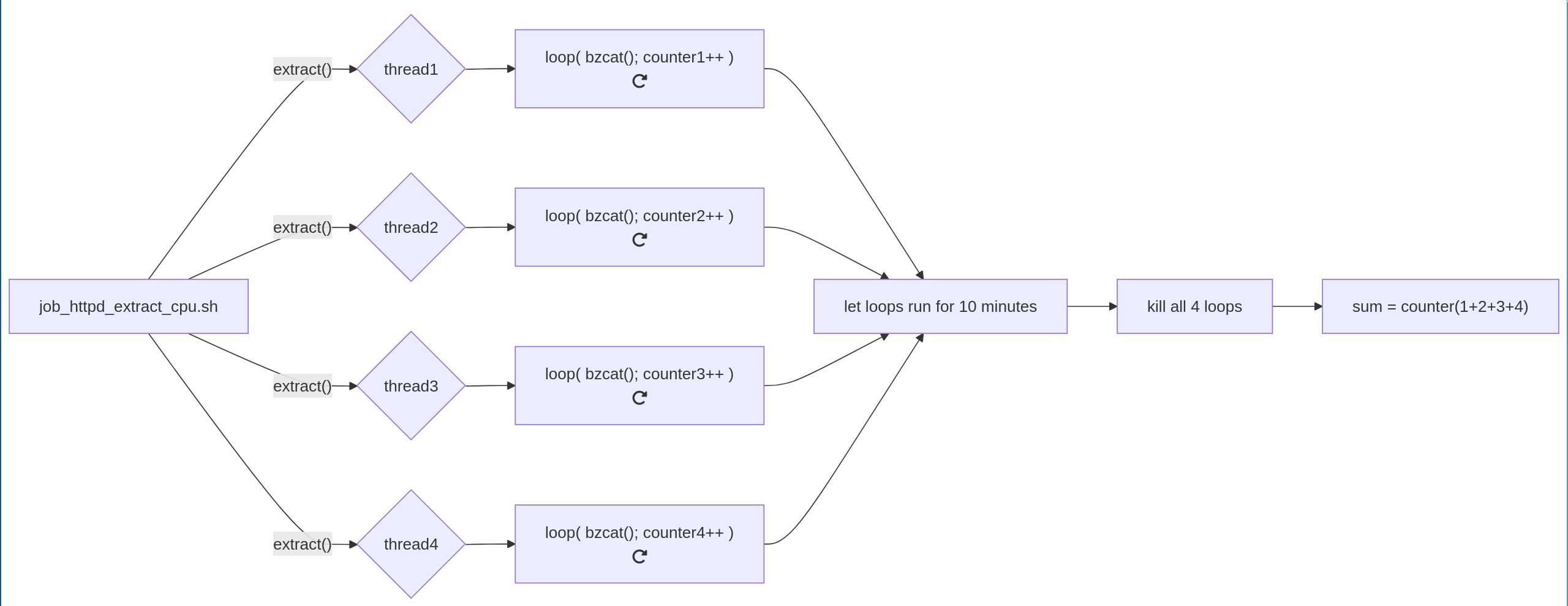
Our contenders
- Thinkpad L480: x86_64, model released 2018, an 8th gen Intel i5-8250U CPU (14nm), 4 cores without hyperthreading. For this system, all three sources to measure power consumption are usable.
- Macbook Pro Asahi Fedora remix: 10 core AppleSilicon M2 CPU (5nm), aarch64. Model from 2023. Up to 10 threads can be run on separate cores.
- Steam Deck: AMD CPU with 4 cores/8 threads (7nm), released 2022
- Raspberry Pi 4: aarch64, a 4 core (16nm) system from 2019
- Star 64: RISC-V board with 4 cores, introduced 2023
Total power draw
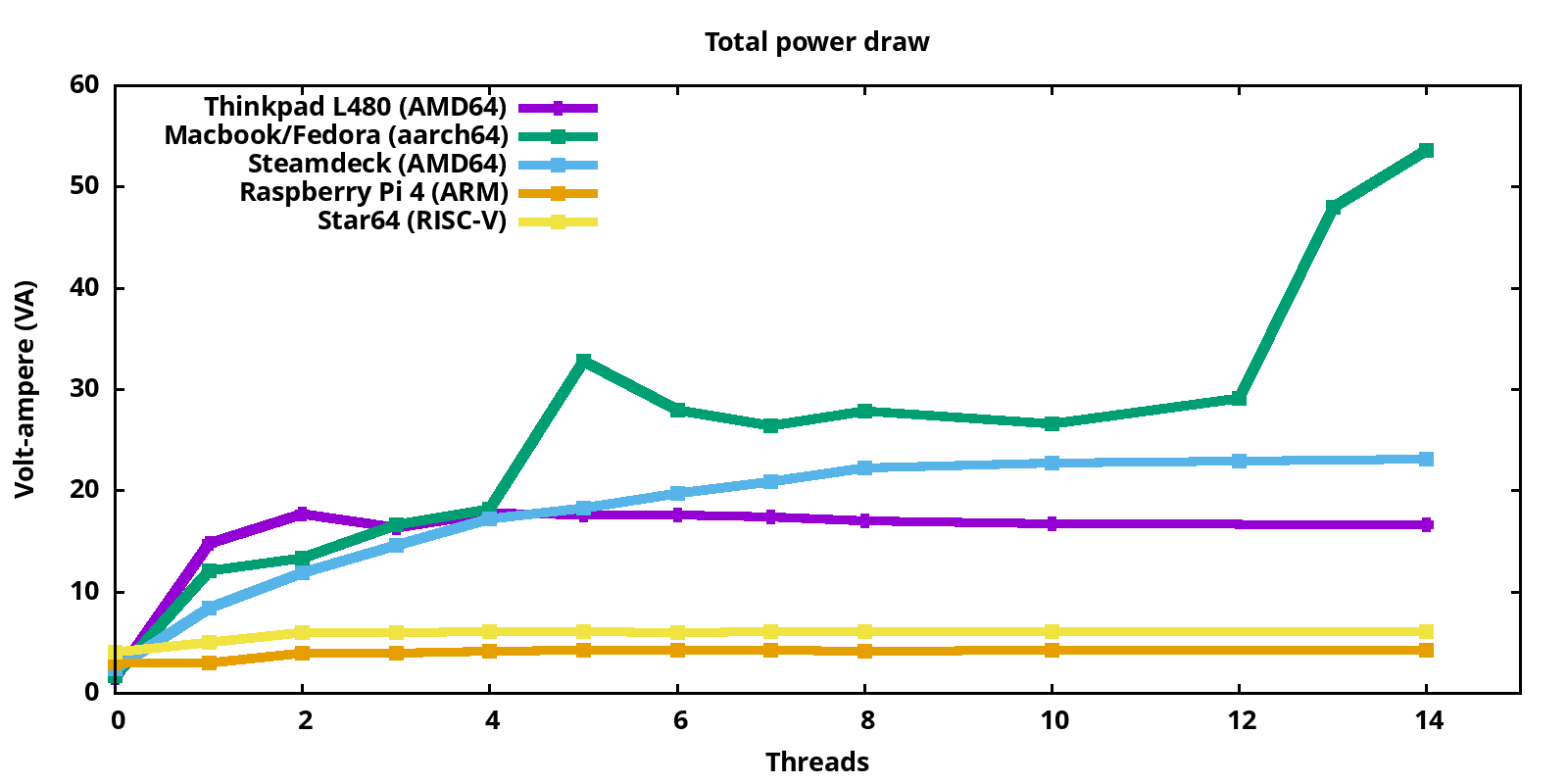
Total job extractions per second
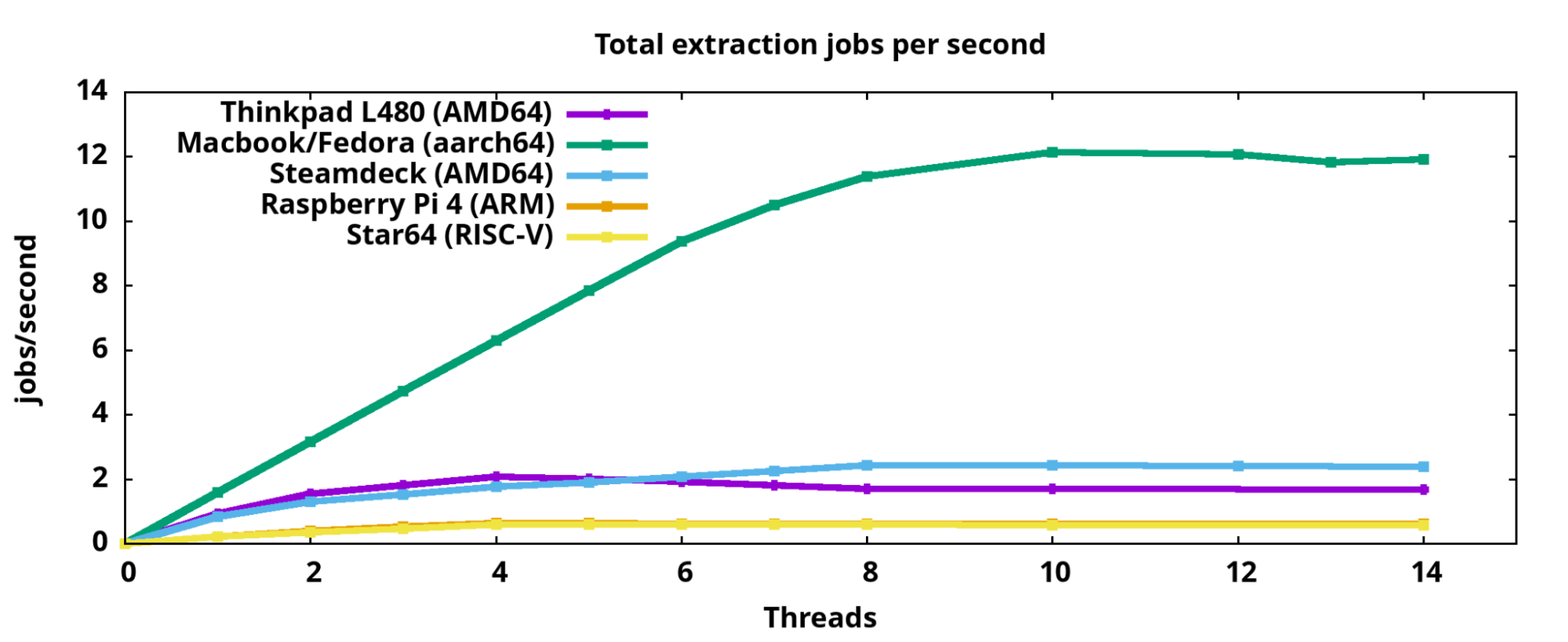
Energy consumption per single job
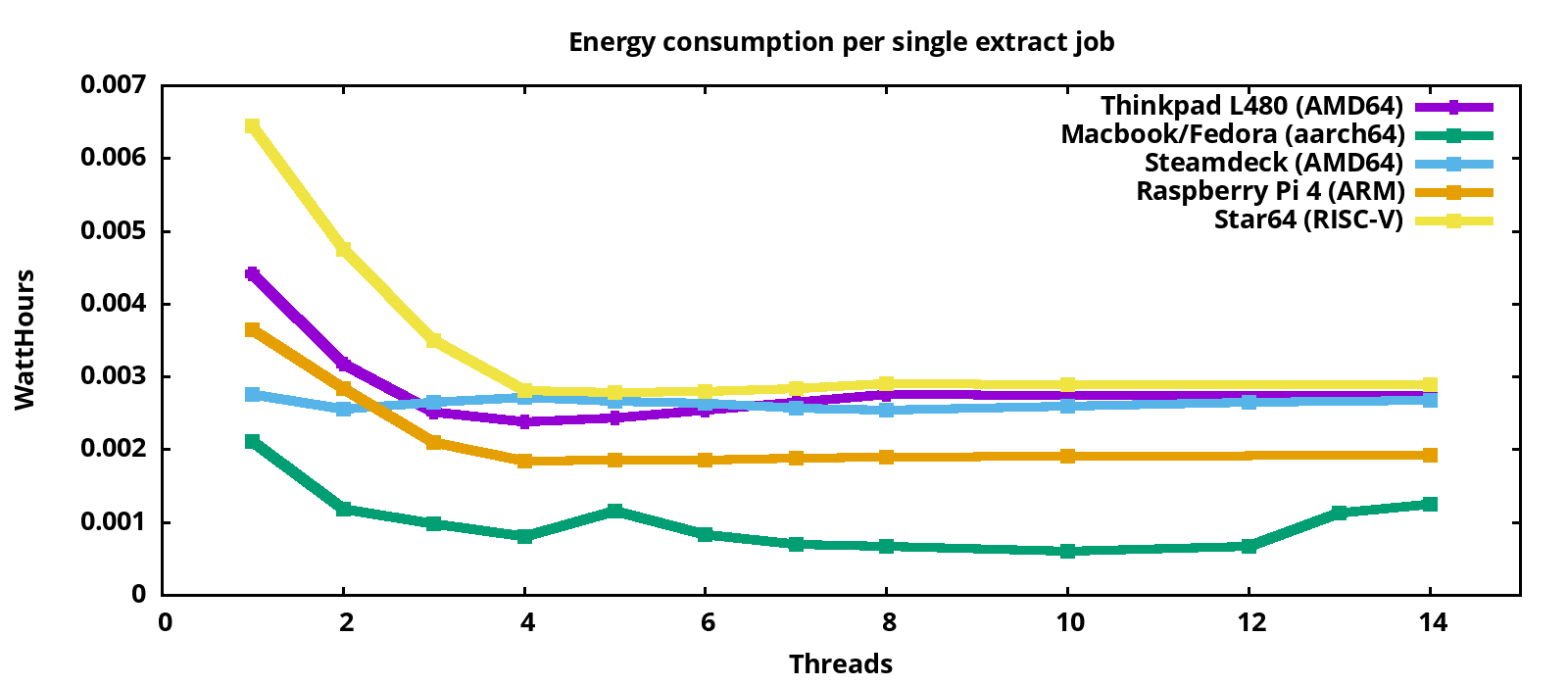
Our contenders, extended
- Thinkpad L480: x86_64, model released 2018, an 8th gen Intel i5-8250U CPU (14nm), 4 cores without hyperthreading. For this system, all three sources to measure power consumption are usable.
- Macbook Pro Asahi Fedora remix: 10 core AppleSilicon M2 CPU (5nm), aarch64. Model from 2023. Up to 10 threads can be run on separate cores.
- Steam Deck: AMD CPU with 4 cores/8 threads (7nm), released 2022
- Raspberry Pi 4: aarch64, a 4 core (16nm) system from 2019
- Star 64: RISC-V board with 4 cores, introduced 2023
- Sun Ultra5: sparc64, 1 core UltraSPARC IIi (270Mhz, 0.35 μm (350nm)), released 1998, running Linu^WNetBSD
Energy consumption per single job incl. Sun Ultra5
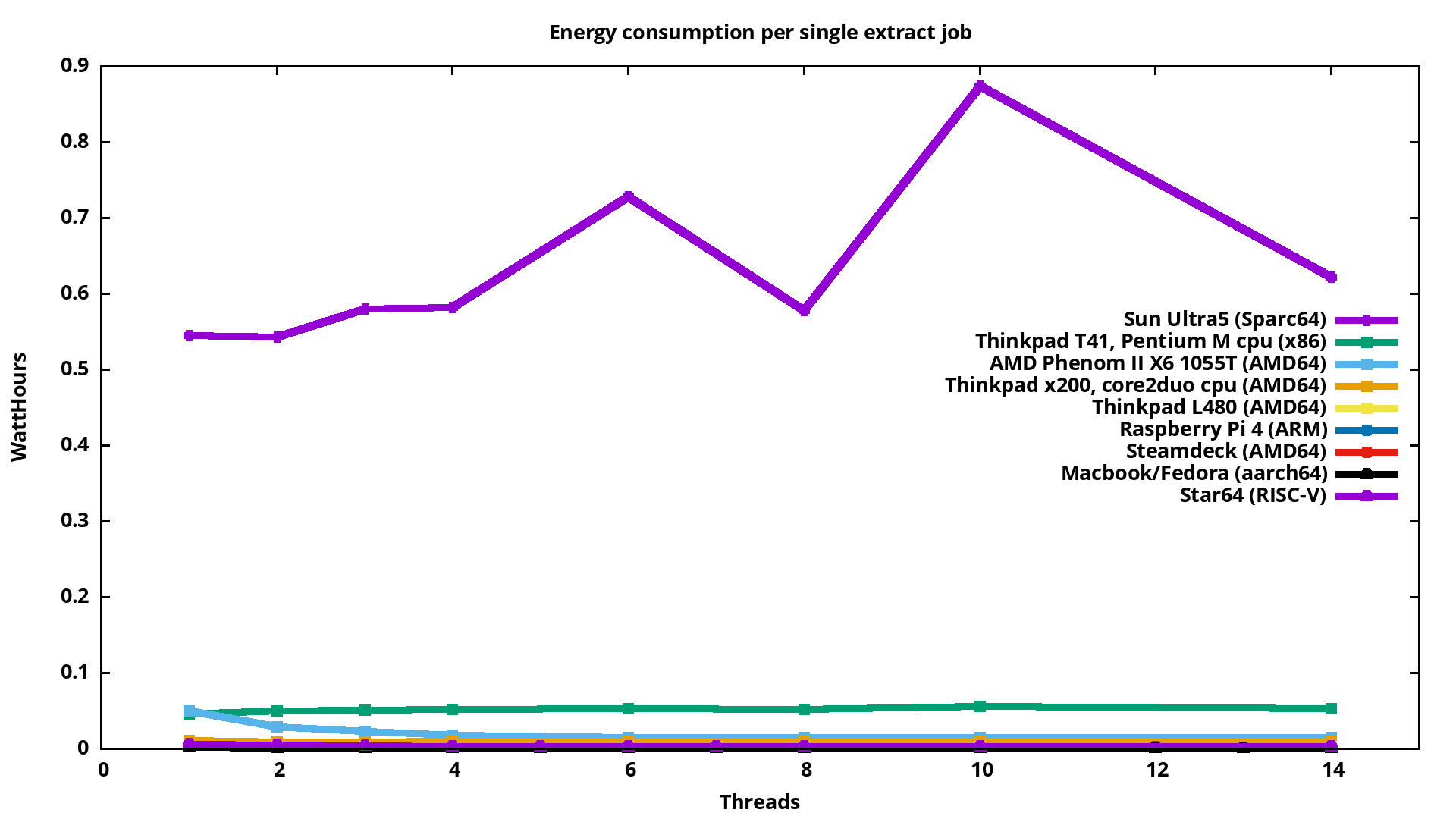
Energy consumption per single job incl. Sun Ultra5 (logarithmic)
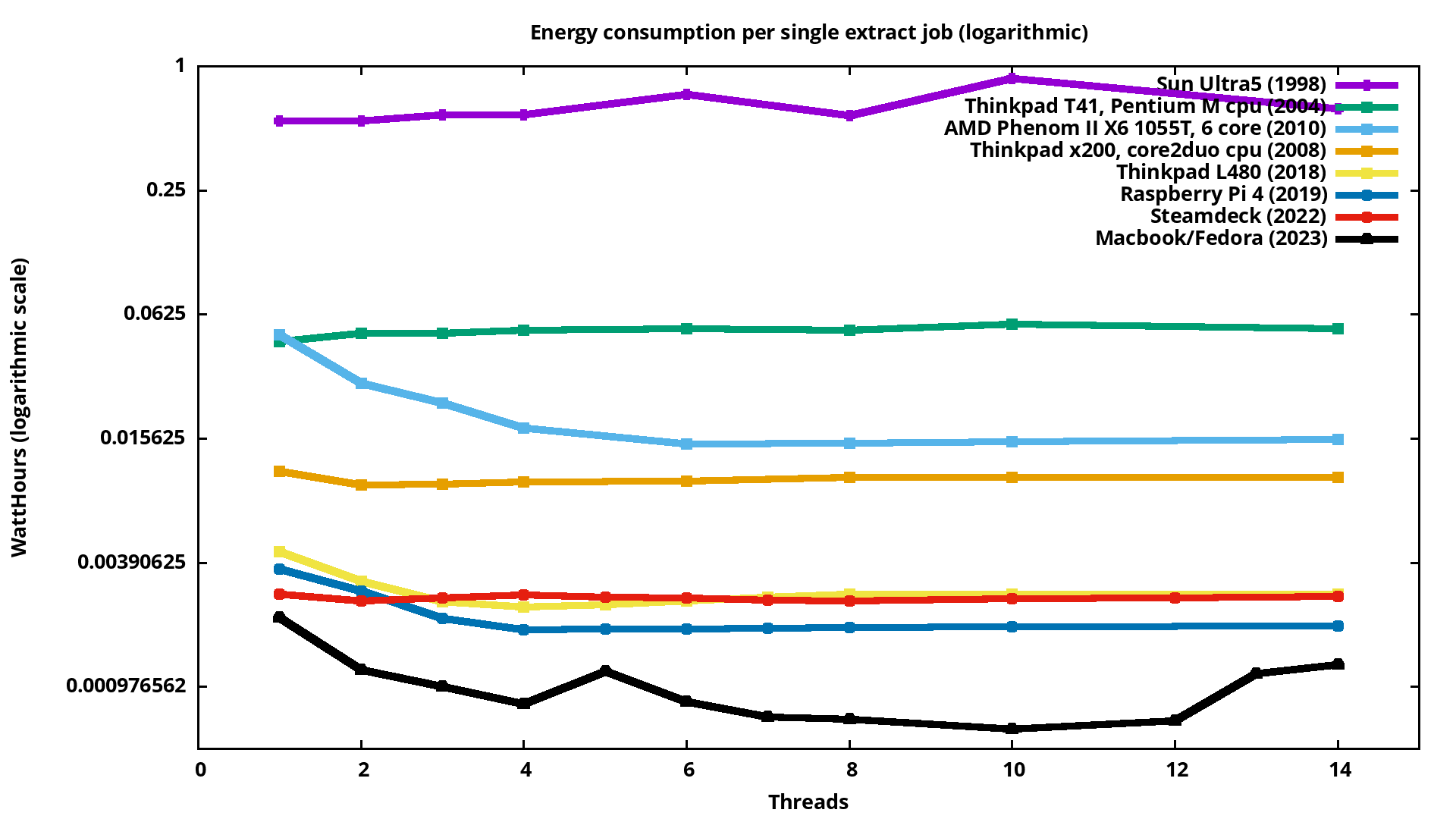
More usecases are in the pmda-handbook, via html or pdf.
Future
- pmda-denki can be used
- to find the best system for their workload
- to understand if new versions of their software use more power
- QE departments could use this to ensure power consumption is not spiking up. If invehicle-OS uses 2x the power after an errata, batteries will be drained..
- Worth looking into:
- Emulating various architectures, overhead?
- Commpunity project open for everybody to contribute consumption measurements?
- Instead of a load which is cpu bottlenecked, how about measuring consumption per I/O?
- Measure power consumption while running Geekbench AI?
- Plenty of ideas, even more
Links
- Article with details for a pmda-denki installation
- Article measuring hardware and software consumption
- pmda-denki summary article
- Is a slow but low-consumption system more energy efficient?
- pmda-denki handbook, html, pdf, src
- fluxcoil wiki, pmda-denki section
- Interested in sessions of looking at the code or the test frameworks? Reach out!
- Questions? Answers!